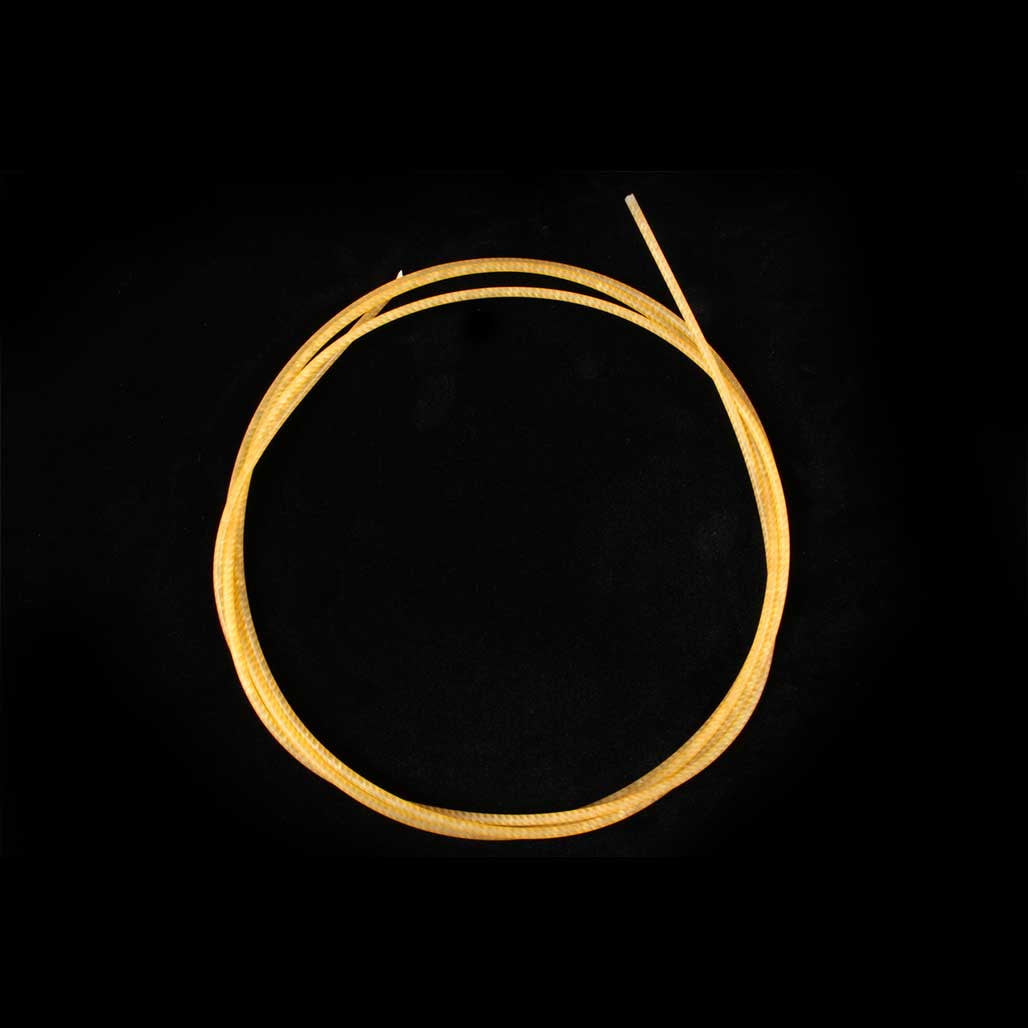Description
Gamut Academie strings are designed for Baroque instruments by those musicians playing historical performance practice at a=415, and are perfectly suitable for modern a=440 practice, but the result will be a little bit more tension at a=440.
| Contrabass d-2 Pistoy Gauges | |
| Light | 2.80mm |
| Light+ | 2.86mm |
| Medium | 2.90mm |
| Medium+ | 2.96mm |
| Heavy | 3.00mm |
| Heavy+ | 3.06mm |
This is a single-length (80", 200cm), double twist, Pistoy-style contrabass (double bass) string made with beef serosa available with either a natural or varnish finish.
Plain gut strings are available with a natural or varnish finish. Natural strings are hand-rubbed with a light oil. Varnished strings have three coats of finish before being hand polished with the oil. There is an additional charge for varnished strings.
In order to secure the bass string in the tailpiece, Gamut Music has developed the use of a leather washer as a stop. A washer is an option you can choose if you do not want to tie a knot at the end of the string as a securing feature. Bass strings are quite thick and sometimes stiff, and tying a knot can be complex and inelegant. The leather washer is a reliable and secure solution to the problem of securing the string at the tailpiece.
The Pistoy string is a unique development of Daniel Larson at Gamut Music. It is named for the town in Italy which was famous for producing the best string for basses, being "flexible, smooth, and well twisted." Our reproduction is made of three strands of gut twisted in one direction, and then the three combined together by twisting in the other direction in rope fashion. When dry, the string is polished down to the specific gauge required by the instrument. The results are a very flexible string with a quick response and a full, round sound. The string is characterized by a noticeable twist and flexible feel.
This is not a polished catline as some think. At first glance this might look like such a thing. However, the Pistoy is fundamentally a different kind of string. It shares one trait with the catline in that the string is made with two directions of twists. This is where the similarity ends. The Pistoy has no space in the structure like the catline does, and therefore has the same density as any plain gut string. The Pistoy string is expensive to make because it takes a lot of time to sort the gut into small bundles to twist and retwist. The gain is in the flexibility. Even in thick gauges the string remains supple and responsive. The color ranges from clear white on thinner strings (1.00mm to 1.10mm) to opaque yellow on thicker strings.
|



